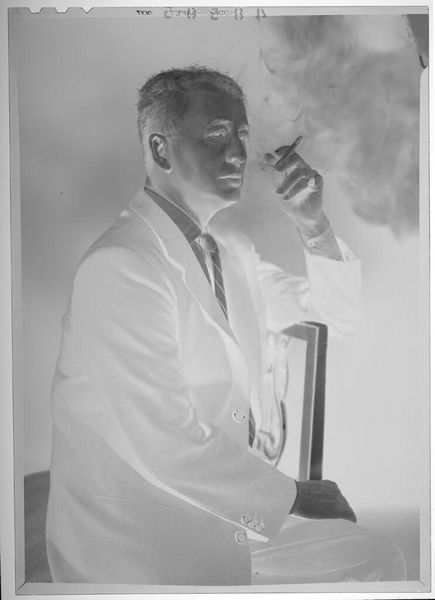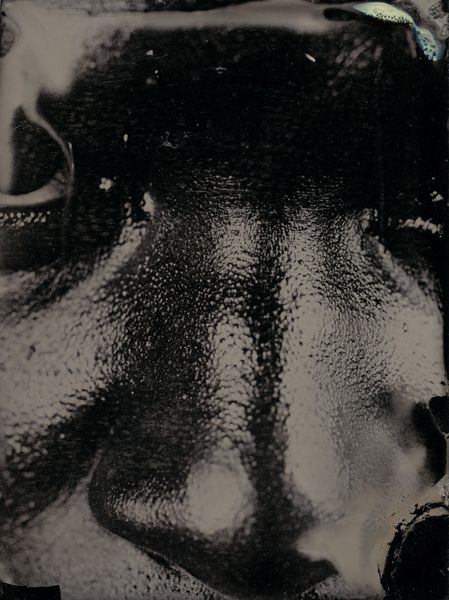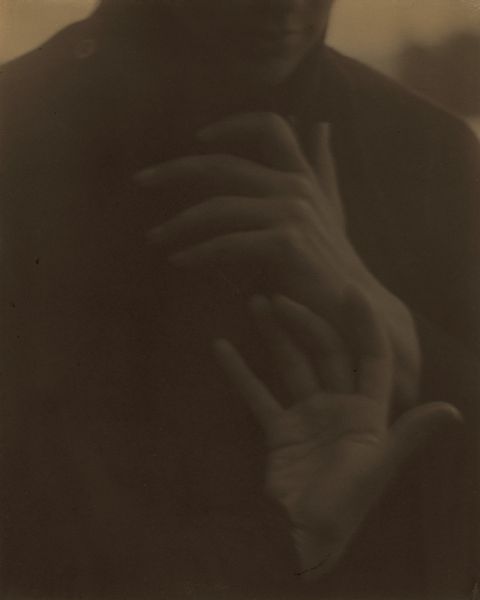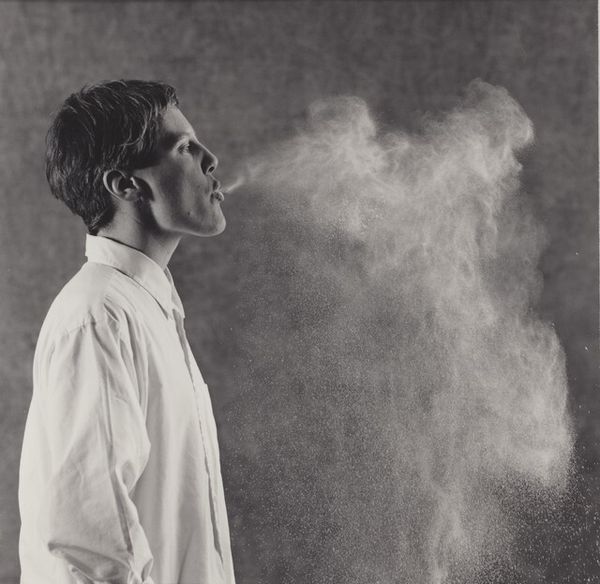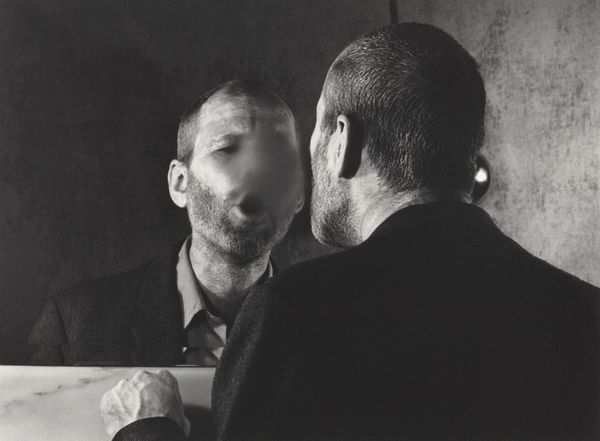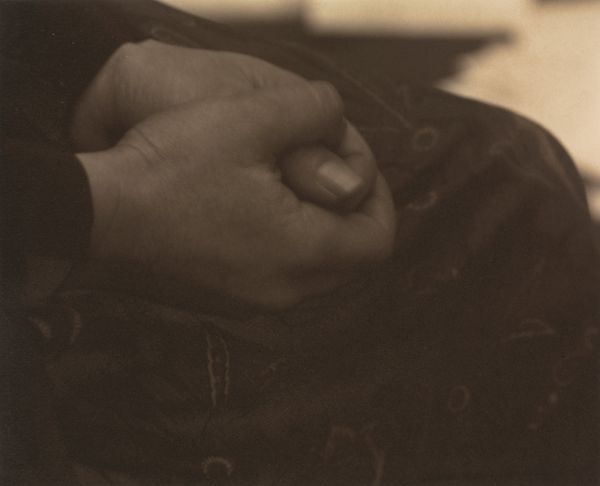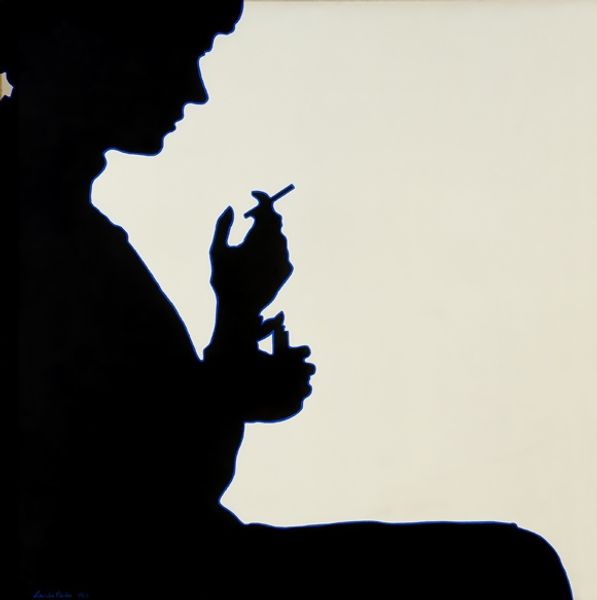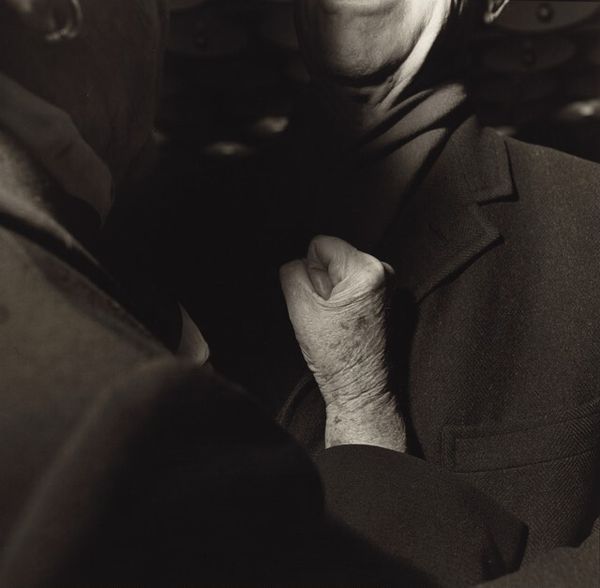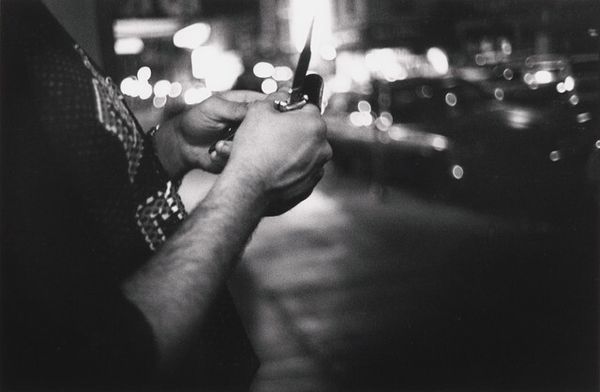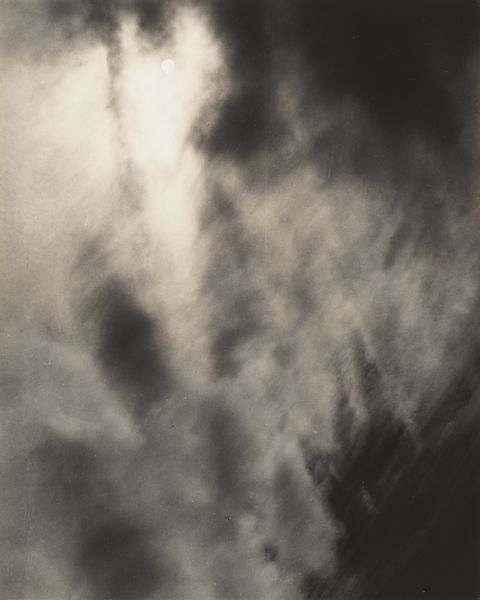
photography, gelatin-silver-print
#
portrait
#
self-portrait
#
photography
#
historical photography
#
gelatin-silver-print
#
modernism
Dimensions: image: 23.5 x 17.7 cm (9 1/4 x 6 15/16 in.) mount: 33.2 x 27 cm (13 1/16 x 10 5/8 in.)
Copyright: National Gallery of Art: CC0 1.0
This self-portrait was made by Edmund Kesting at an unknown date, using photography. Look at how Kesting uses light and shadow to define his face, almost sculpting it. The smoke from the pipe blurs the lines, adding a sense of mystery. You can almost smell the tobacco, right? The photo feels very tactile, like you could reach out and touch the rough texture of his tweed jacket or the smooth curve of the pipe. See the way his brow is furrowed slightly? It makes you wonder what he was thinking about when he took the picture. Kesting was interested in experimentation with light and movement. You can see this in his other work too, particularly his photomontages. He was part of a generation of artists who were pushing the boundaries of photography, exploring its potential as a medium for personal expression. Like Moholy-Nagy, Kesting encourages us to consider the camera as more than just a recording device.
Comments
No comments
Be the first to comment and join the conversation on the ultimate creative platform.

